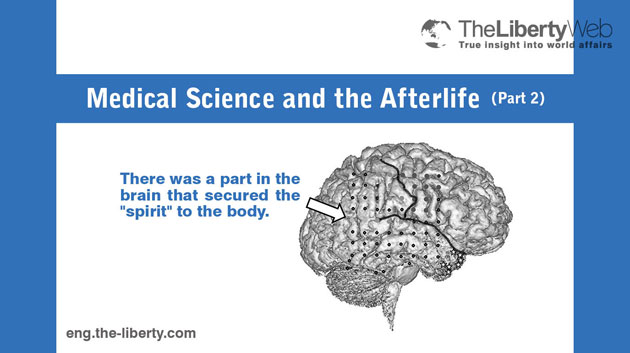Medical Science and the Afterlife (Part 2)
Another Dimension Seen Through the Lens of Neuroscience
Previously called “cerebral centrism”, the idea that human consciousness was merely a product of the brain was popular. Now, though, we know from advances in neuroscience and measurement techniques that the brain is related to the other world.
The “Re-Creation” of Out-of-Body Experiences
 One type of near-death experience is out-of-body phenomenon whereby the consciousness of someone who has had, for example, a cardiac arrest leaves his body and looks down on himself. In 2002, Dr. Olaf Blanke and his team from the University of Geneva reported that they were able to repeatedly induce out-of-body experiences in a patient by stimulating the part of the right parietal lobe of a patient’s brain called the angular gyrus (Figure 1) with an electrode during an epilepsy treatment. The patient was conscious, and said that he could see himself sleeping from above and that he was floating near the ceiling about 2m above his bed. (Note 1)
One type of near-death experience is out-of-body phenomenon whereby the consciousness of someone who has had, for example, a cardiac arrest leaves his body and looks down on himself. In 2002, Dr. Olaf Blanke and his team from the University of Geneva reported that they were able to repeatedly induce out-of-body experiences in a patient by stimulating the part of the right parietal lobe of a patient’s brain called the angular gyrus (Figure 1) with an electrode during an epilepsy treatment. The patient was conscious, and said that he could see himself sleeping from above and that he was floating near the ceiling about 2m above his bed. (Note 1)
Dr. Blanke and his team were circumspect because it was also possible that they were hallucinations caused by an information-processing error of the brain, but they could not come up with an explanation as to why the mechanism that repeatedly caused such hallucinations was in the brain. Rather, a more open and simple explanation was that a part of the brain exists that works to secure the consciousness to the body, with the consciousness separating from the body whenever electricity numbs that part.
If consciousness can exist separate from the body, even if the body dies, the mind (the spirit) could continue to live. In other words, there could be strong evidence here for the afterlife. If this type of research advances, “re-creatable” evidence on the afterlife should accumulate.
The Brain, Linked to an “Another Dimension”
 Heisenberg, known for his study of quantum mechanics, said that theoretical physics had reached a level where it could not deny an invisible, vital, force-like existence, but often the latest neuroscience cannot explain it without the premise of subatomic particles that appear and disappear.
Heisenberg, known for his study of quantum mechanics, said that theoretical physics had reached a level where it could not deny an invisible, vital, force-like existence, but often the latest neuroscience cannot explain it without the premise of subatomic particles that appear and disappear.
To explain the movement of cerebral blood flow (Figure 2), Dr. Toshinori Kato from the neuroscience research and development company Katobrain developed the “oxygen exchange wave equation”, which described a so-called other dimensional space, using the imaginary number “i” (Note 2). He is currently advancing his ideas, having developed a machine for testing the brain based on his research.
There is also the gamma wave resonance phenomenon, which is said to be one piece of evidence for spirituality. Magneto encephalography was developed and, as a result of being able to go so far as to map in images the activity deep in the brain, we have learnt that gamma waves created when in deep meditative states are detected at point A and point B in the brain simultaneously without a time lag. Using quantum mechanics theory, this phenomenon can be explained if we assume that gamma waves pass through another dimensional space that is not a three-dimensional one.(Note 3)
If brain wave measuring and experimentation advance, further proof will exist for the relationship between the brain and another dimensional space, which corresponds to the other world.



















